Mauritius Oil Spill Could Impact Country's Economy for Decades
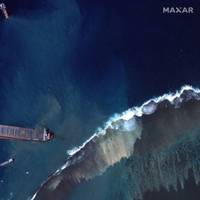
Some corals have lived for centuries at the fringes of Mauritius. Now smothered for days in heavy fuel oil spilled from a wrecked Japanese ship nearby, parts of those reefs may be in trouble.The full impact of the toxic spill is still unfolding, scientists say. As the Indian Ocean island's residents scramble to mop up the oil slicks and clumps, they are seeing dead eels and fish floating in the water, as fuel-soaked seabirds limp onto shore.Satellite images also show the 1,000…
Wakashio Spill Leads Mauritius to Declare Emergency

Fuel spilling from a Japanese bulk carrier that ran aground on a reef in Mauritius two weeks ago is creating an ecological disaster, endangering corals, fish and other marine life around the Indian Ocean island, officials and environmentalists say.The MV Wakashio, owned by the Nagashiki Shipping Company, struck the reef on Mauritius' southeast coast on July 25.On Thursday, the government said fuel was leaking from a crack in the vessel's hull and Prime Minister Pravind Kumar Jugnauth declared a state of environmental emergency…
Marine News Boat of the Month: June 2017
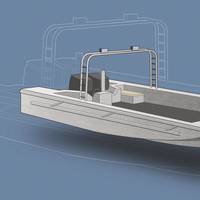
The Elastec Inlander river utility boat (RUB) is a unique concept. But, Elastec already manufactures many other response and utility craft for this market. What prompted the internal effort to create such a craft was that while on oil spill deployments with customers, Elastec personnel began to notice quite a few response organizations using “reconfigured” recreational watercraft (fishing boats) to perform tasks. Those boats, according to Elastec, were not well suited to the tasks they were doing, both in terms of safety and operational utility.
Courts Upholds BP 'gross negligence' Gulf Spill Ruling
A U.S. The decision by U.S. District Judge Carl Barbier in New Orleans means BP could still face close to $18 billion of penalties for violating the federal Clean Water Act. It marks the latest setback in BP's effort to curb costs from the April 20, 2010, explosion of the Deepwater Horizon rig, which led to 11 deaths and the largest U.S. offshore oil spill. The trial is expected to resume in January. Barbier had on Sept. 4 ruled that BP committed gross negligence and was 67 percent at fault for the spill. The gross negligence finding roughly quadrupled the maximum civil penalty that BP could face under the Clean Water Act. BP later argued that this ruling relied on inadmissible testimony from an expert for Halliburton Co, which provided cementing work at the spill site.
Olympic Tug & Barge Fined for Port Angeles Oil Spill
The Washington Department of Ecology (Ecology) is fining Olympic Tug & Barge of Seattle $16,500 for spilling oil into Port Angeles Harbor last November. The spill occurred when a company-owned fuel barge was overfilled while being loaded with fuel oil. Ecology determined the Nov. 7, 2012, heavy fuel oil spill occurred because of an error by the barge operator. More than 1,700 gallons of fuel spilled to the deck of the barge with nearly 50 gallons entering Port Angeles Harbor. The oil transfer was being conducted at the Tesoro Port Angeles Terminal located at the foot of the spit Ediz Hook. Olympic Tug & Barge had oil containment boom placed around the barge prior to starting the fuel transfer which helped contain the spill.
Response Efforts Continue at Well Spill Site
The Bureau of Safety and Environmental Enforcement (BSEE), U.S. Coast Guard and Walter Oil & Gas Corporation (Walter), through the Unified Command, continue to oversee and coordinate response efforts to secure the South Timbalier 220 natural gas Well A-3. Safety of personnel and protection of the environment remain the top priorities. BSEE approved plans to send a camera and logging tools down the wellbore and is conducting visual observation along with Unified Command. Observations will be used to advance well intervention plans. No gas releases are reported from fixed wireless detectors placed some 30 feet from the top of the well or detection devices carried by all onsite personnel. Drilling on the relief well is underway using the Rowan EXL-3 jack-up rig, contracted by Walter.
Insights: Andrew Altendorf President, SCAA
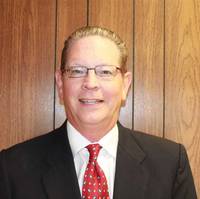
Andrew Altendorf is the CEO and majority owner of Acme Environmental Inc. Acme’s history spans almost 50 years and the firm is recognized as a pioneer in the manufacture of oil spill containment booms and other oil spill recovery items. A U.S. Coast Guard classified OSRO, Acme and Altendorf support numerous customers in Oklahoma and the Midwest with their emergency response. He has been the President of the Spill Control Association of America since November of 2010. Prior to taking the reins as President, he served on the SCAA Board of Directors for 5 years.
Historic Shipwreck Discovered in Northern GOM
During a recent Gulf of Mexico expedition, NOAA, BOEM and partners discovered an historic wooden-hulled vessel which is believed to have sunk as long as 200 years ago. Scientists on board the NOAA Ship Okeanos Explorer used underwater robots with lights and high definition cameras to view remnants of the ship laden with anchors, navigational instruments, glass bottles, ceramic plates, cannons, and boxes of muskets. Equipped with telepresence technology, Okeanos Explorer reached audiences around the world who participated in the expedition through live streaming Internet video. As members of the public ashore watched live video from the ocean bottom…
NOAA Releases Study on Deepwater Horizon Controlled Burns
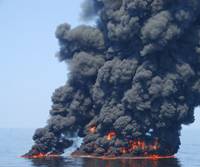
During the 2010 BP/Deepwater Horizon Gulf oil spill, an estimated one of every 20 barrels of spilled oil was deliberately burned off to reduce the size of surface oil slicks and minimize impacts of oil on sensitive shoreline ecosystems and marine life. In response to the spill, NOAA quickly redirected its WP-3D research aircraft to survey the atmosphere above the spill site in June. During a flight through one of the black plumes, scientists used sophisticated instrumentation on board, including NOAA's single-particle soot photometer, to characterize individual black carbon particles.
This Day in U.S. Coast Guard History - March 28
* 1968- The Secretary of Transportation released his Report on Recreational Boat Safety. The report contained a detailed explanation of the proposed legislation and the programs the department intended to undertake if the proposal was adopted. * 1993-A Colonial Pipeline Company pipe ruptured, spilling 400,000 gallons of diesel fuel into the Sugarland Run creek in Herndon, Virginia. The EPA requested the assistance from the National Strike Force. Other units mobilized for the clean-up operation included a helicopter from AIRSTA Cape May, an air-eye HU-25 from AIRSTA Cape Cod, personnel from MSO Baltimore, the CGC Capstan, and reservists from the region. The strike team used the new DESMI 250 skimmer and pump to control the spill.
BOEMRE Environmental Study: Post-Deepwater Horizon Spill
The Bureau of Ocean Energy Management, Regulation and Enforcement (BOEMRE) announced that a team of scientists led by BOEMRE geophysicist Bill Shedd will embark tomorrow morning on a research cruise that will examine deep sea coral and chemosynthetic community sites in the Gulf of Mexico. Findings from this research will help scientists discover the possible effects of the large volumes of oil released in the deepwater following the Deepwater Horizon blowout and spill. The cruise, funded by BP through the Natural Resource Damage Assessment (NRDA), will depart from Freeport, Texas on October 29, 2010, for the ten day cruise. Biologists and geoscientists from BOEMRE…
CG Photo: Oil Skimming
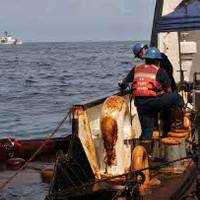
Crewmembers monitor the oil skimming set-up aboard Coast Guard Cutter Walnut, a 225-ft sea-going buoy tender based in Honolulu, while Coast Guard Cutter Resolute stands off nearby. The Walnut is skimming oil near the BP oil spill site after transiting the Panama Canal. Coast Guard photo by Petty Officer 1st Class John Masson.
Bad weather Could Delay BP Well Work Again
According to a Jul 21 report from Reuters, BP Plc could delay work to plug its Gulf of Mexico oil leak by up to 10 to 14 days if a northern Caribbean weather system strengthens and forces vessels at the spill site to move out of the way, the top official overseeing the spill response said on Wednesday. (Sources: Reuters)
Gulf Oil Spill: Ships Face Few Delays

As oil from BP's sub-sea well laps coastal Louisiana, most ships in the Gulf have avoided contact with the spill but owners fear that regulations will be tightened after the disaster, raising their costs. “We've seen no delays from the spill, and it hasn't affected the operations of any of our ships,” said Dean Taylor, president of Tidewater Inc. in late May. Four vessels owned by Tidewater, which is headquartered in New Orleans, have been involved in recovery efforts. The company's work boat Damon B.
BP Ships Second Containment Dome to Gulf Spill Site
According to a May 11 report from Reuters, BP Plc said it has finished building a smaller dome designed to trap oil spewing from the floor of the Gulf of Mexico and plans to try placing it over the relentless leak. This "top hat" dome was taken out to sea by ship from Port Fourchon in southeastern Louisiana, where it was made. Robotic submarines will then make preparations before the containment structure is put into place. (Source: Reuters)
Florida - USCG Pollution-Response Exercise
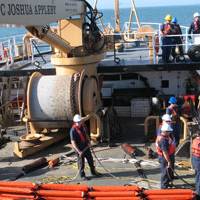
Coast Guard members from Sector St. Petersburg, Fla., and the Coast Guard Cutter Joshua Appleby, homeported in St. Petersburg, along with personnel from Port Manatee, conducted a pollution-response exercise at the Port of Manatee in Palmetto on Nov. 13. The exercise was aimed at testing and improving the Coast Guard's ability to assemble, deploy and operate a Vessel of Opportunity Skimming System (VOSS). A VOSS is used to isolate and collect the spilled substance during or after a spill.
Coast Guard to Deploy VOSS
The U.S. Coast Guard is exercising their pollution response capabilities by deploying a Vessel of Opportunity Skimming System (VOSS) from the Coast Guard Cutter Katherine Walker, a 175-ft. Keeper class buoy tender home ported in , , in Thursday, June 26, 2008. Media are invited to observe the exercise from aboard the Katherine Walker or the Coast Guard Cutter Sturgeon Bay, a 140-ft. Bay-class ice breaking cutter home ported in Bayonne, N.J., also involved in the exercise. The will host high school students from the Science and Technology Preview summer camp, an environmental education program based in , for the event. After the deployment, the students will meet the cutter Katherine Walker crew in for a tour of the ship and the VOSS equipment.
Coast Guard Tests Oil Recovery System
The Coast Guard is scheduled to deploy its Vessel of Opportunity Skimming System Tuesday at 3 p.m. from the Coast Guard Cutter Maria Bray in the St. Johns River during a training exercise. VOSS is designed to be transported to an oil spill site and convert any suitable ship available (commercial, private or government-owned vessel) into a single ship, oil-recovery platform. The Coast Guard has 19 of these systems pre-positioned nationwide for pollution response. This VOSS deployment is part of Sector Jacksonville's three-day training program designed to better prepare Sector Jacksonville personnel for a hazardous materials spill on the First Coast. The training includes extensive classroom discussion and hands-on training for VOSS deployment. The Maria Bray is a 175-ft.
Marine Oil Spills and Response Options
Marine oil spills are subject to natural processes, which alter oil's physical and chemical properties. These factors ? as well as the type of oil spilled, the magnitude of the spill, and the physical conditions of the spill site ? determine the appropriate response for spill cleanup. Response options include mechanical recovery, chemical treatment and in-situ burning. Every spill scenario is unique and constantly changing. Careful assessment by experienced personnel is required for effective response performance. Natural spreading of the oil spill is a major factor in determining the response option most likely to succeed. The number and availability of personnel and equipment is also a major consideration.
Salvage and Firefighting Proposal Would Cost $500 Million
A new Coast Guard proposal that would require tank vessel owners to augment their spill response plans with prearranged salvage and firefighting resources would cost industry nearly half a billion dollars to implement, the Coast Guard estimates. The notice of proposed rulemaking (NPRM), published in the May 10 Federal Register, is intended to stimulate the development of a robust private salvage and firefighting capability in the United States. The NPRM would require holders of approved tank vessel response plans to amend their plans to included pre-contracted access to an extensive suite of salvage and firefighting resources, all capable of being on scene within specified response times.
Mississippi River Bunker Spill
The U.S. Coast Guard responded to a fuel oil spill on the Lower Mississippi River near Norco, La. Reportedly, the freighter Bright State struck the tanker Genmar Alexandra while the latter vessel was moored at a dock. It is estimated that 22,000 gallons of bunkers were spilled from the tanker as a result of the allision. The Coast Guard is responding to the spill and investigating the incident. The National Oceanic and Atmospheric Administration (NOAA) also issued a release stating that it has dispatched a team of scientists to the spill site to provide trajectory forecasts, advice on response techniques, and damage assessments. (HK Law).
Coast Guard Rescues Three
A U.S. Coast Guard crew from Memphis, Tenn., rescued three men whose vessel sank on the Mississippi River, near Tunica, Miss., Thursday at about 10:15 a.m. Ron Nigg, Rick Howell and Tony Lippman were rescued after their 22-foot skiff sank as they were returing from an oil spill cleanup in Tunica. At the time of the accident, there were high winds and choppy conditions reported on the river. A Coast Guard inspection crew from Marine Safety Office Memphis was also at the Tunica oil spill site monitoring cleanup efforts when they were informed that the three men were in the water. The crew, Lt. Ted Lampton, Petty Officer 3rd Class Wyatt Ingram and Petty Officer 3rd Class Jacob Taylor…
Coast Guard Investigates Diesel Spill
Coast Guard marine safety personnel are investigating a reported diesel fuel spill at mile marker 158 in the Lower Mississippi River, near St. James, La. Crewmembers of the tug Tom Jump, of St. Louis, Mo., were reportedly transferring fuel between compartments when approximately 950 gallons spilled into the water. Boom, which is a floating device used to contain oil, was deployed to control the spread of the product. There were no injuries reported. A broadcast will be issued on VHF-FM radio channel 16 to alert mariners of the spill. A helicopter crew from Air Station New Orleans is en route to provide an aerial survey of the spill site. Personnel from Marine Safety Office New Orleans will be investigating the incident.






